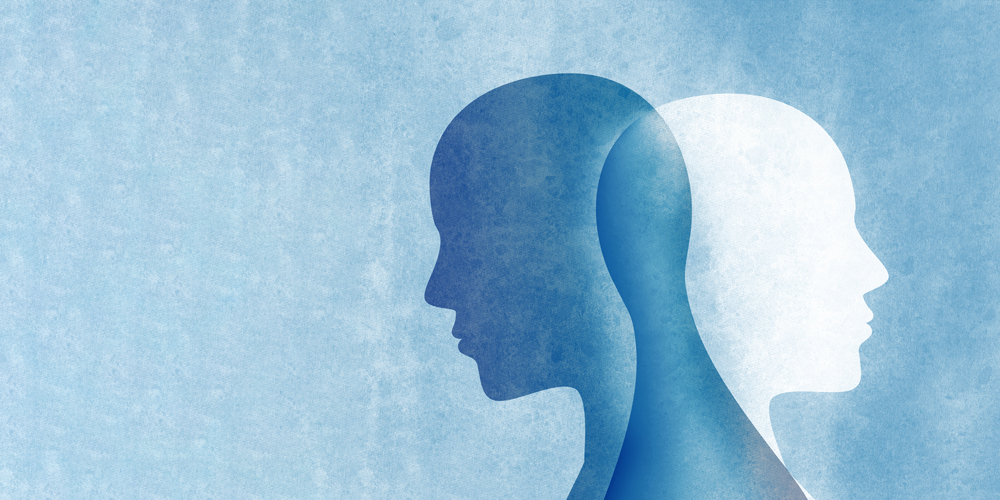LISTEN TO THIS ARTICLE:
Since psychologists identified it over 160 years ago, Bipolar Disorder has been a tough diagnosis to make accurately. In the past we’ve called it “circular insanity,” “manic depressive psychosis,” and “manic depression.” Bipolar Disorder was not officially recognized as a separate mental illness until 1980. Now we know that it’s actually a group of four illnesses with different dangers and definitions.
Despite this progress, over 2 out of 3 people with Bipolar Disorder wrongly receive a different diagnosis at first. One of those will keep that incorrect diagnosis for over 10 years before the error finally gets fixed. People wait 5 to 7 years between when they first feel symptoms and when they finally are diagnosed with Bipolar Disorder. These delays can be life-threatening because this disorder increases the risk of suicide by 20 times the national average.
Depression vs. Bipolar Disorder
Of the two sides of Bipolar Disorder (depression and mania or hypomania), the depressive episodes more often lead people to seek treatment. When people in the middle of a deep depression, it might feel like they have always felt that way and always will. Depression can be so powerful that people will not recall ever having felt manic or hypomanic. Many people who first go through mania or hypomania may not even recognize some of the symptoms as a problem, especially if they are more mild.
Even worse, there’s no way to tell the difference between an episode of Major Depression and the depression that is part of Bipolar Disorder. When a doctor sees someone with depression, all they can use to tell the difference is the person’s medical history. Usually, that’s not enough to know for sure if they have Bipolar Disorder. As a result, about 4 out of 10 people with Bipolar Disorder are initially diagnosed with Major Depressive Disorder instead.
Borderline Personality Disorder vs. Bipolar Disorder
Half of people with Borderline Personality Disorder are diagnosed with Bipolar Disorder first. People with these disorders deal with very unstable moods. Both groups can be angry, irritable, and impulsive. People with Borderline PD and those with Bipolar Disorder struggle to maintain stable relationships. Most dangerous of all, suicide rates are high for people with each disorder. All of this combines to make Borderline Personality Disorder one of the most missed disorders of all.
Substance Use Disorders vs. Bipolar Disorder
Roughly 40-60% of people with Bipolar Disorder also deal with a Substance Use Disorder at some point in their lives. However, drug use makes it hard to get the right diagnosis. The effects of stimulants like trouble sleeping, racing thoughts, and feelings of power can mask or imitate mania or hypomania. This leads clinicians to either miss Bipolar Disorder or diagnose it in someone who doesn’t actually have it. Heavy use of alcohol can similarly confound a doctor’s ability to detect depression. This all means that, in order to make the right mental health diagnosis, people need to focus on getting sober first. Without sobriety, medications and therapy will likely act only as band-aids that don’t reach the underlying problem.
Anxiety vs. Bipolar Disorder
At least half of people with Bipolar Disorder suffer from some sort of anxiety disorder as well. This causes trouble when trying to make an accurate diagnosis. Anxiety can mask symptoms of mania and hypomania but not those of depression. People in any of these states can have racing thoughts or trouble focusing. Problems sleeping are another shared symptom that make the situation even more difficult to sort out. As a result, many end up with a dual diagnosis of anxiety and depression, instead of anxiety and Bipolar Disorder.
ADHD vs. Bipolar Disorder in children
Attention Deficit/Hyperactivity Disorder (ADHD) and Bipolar Disorder can be hard to tell apart in children. Kids with either disorder can be irritable, impulsive, reckless, and have trouble focusing. Mood symptoms are hard to identify accurately. Children often give poor descriptions, and doctors have to rely on parents’ reports. The best way to tell the difference is using the most extreme symptoms to identify Bipolar Disorder. These include suicidal thoughts, psychosis, delusions, or rapid cycling between moods. When those aren’t present, the process of diagnosis is tough.
Consequences of a wrong diagnosis
When people get the wrong diagnosis, it creates a dangerous and life-threatening situation whose effects can last for years. There’s two sides to this problem. People with the wrong diagnosis end up getting treatment that they don’t need and suffering the side effects. As this is happening, their true disorder continues unchecked. It creates havoc in their lives while they continue the treatment they think should help but never does.
People who don’t get the right diagnosis will continue to go through untreated manic or hypomanic episodes. Confusion between Borderline PD and Bipolar Disorder can prevent people from getting the right treatment. People with Borderline benefit the most from Dialectical Behavioral Therapy, but they might not get it. This leads to years of suffering and excessive risk of suicide.
Substance use disorders – mistaken as Bipolar Disorder – continue to rage, causing chaos throughout all areas of peoples’ lives. Medications and therapies for Bipolar Disorder won’t help this one bit, either. Drinking and drug use likely get worse without detox and a sobriety program. This is ultimately frustrating for everyone as people expect to feel better but continue to get worse. This pattern continues to hold true across the board when one disorder is mistaken for another. Manias confused as anxiety or ADHD go untreated, while depressive episodes occasionally get attention.
Getting it right
When seeing a doctor for the first time for a mental health evaluation, the more details available, the better. Most times, doctors only have the person’s own report to go on. Sadly, the effects of Bipolar Disorder can distort perceptions and memories. Input from family, friends, and partners can be immensely helpful. They can point out past episodes of mania and hypomania and provide helpful family history. Doctors can also use a tool called the Mood Disorder Questionnaire, which can help hone in on Bipolar Disorder.
Depressive episodes stand out while manias and hypomanias are easy to miss. Taking extra time to make the diagnosis can help address this. Individuals can keep mood journals and bring them to subsequent meetings. This gives a more accurate picture of the situation. All this can help ensure doctors have what they need to make the best diagnosis.


 Learn
Learn Read Stories
Read Stories Get News
Get News Find Help
Find Help


 Share
Share
 Share
Share
 Share
Share
 Share
Share

